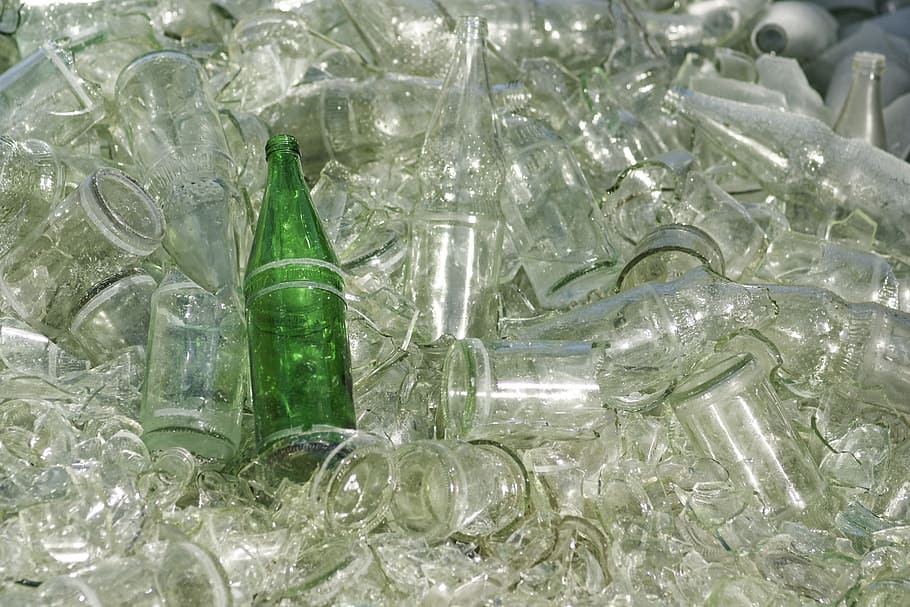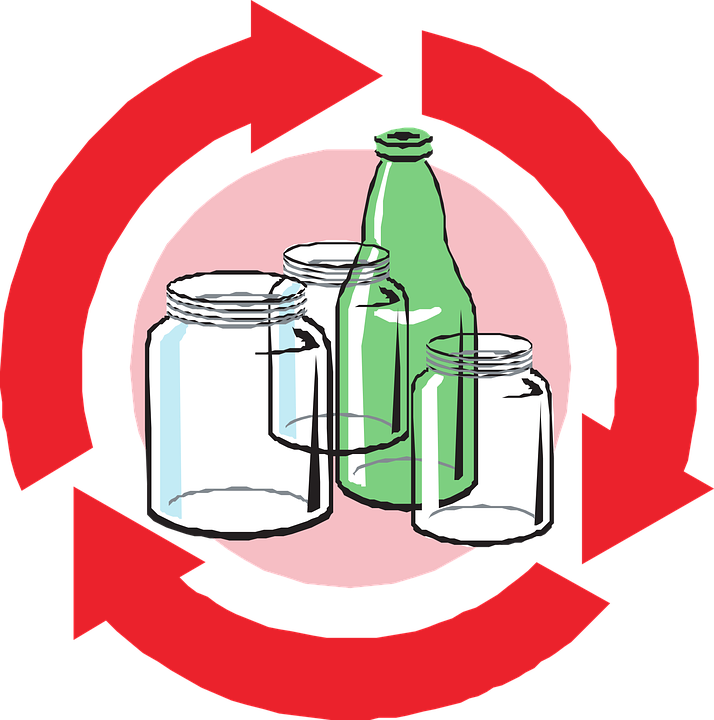Contents
– Glass recycling: nature and savings
– Recycling glass requires sorting beforehand
– Recycling is sometimes impossible: toxic products
– Glass recycling process: instructions for use
The glass recycling policy concerns 75% of the total glass production.
Unlike other raw materials, glass can be recycled endlessly. Since the 1970s, glass recycling has been made easy thanks to adapted containers.
Glass recycling: nature and savings
Recycling glass requires an effort from the citizens: 1 ton of glass = 2,138 new 75 cl bottles. This effort is primarily rewarded by:
– savings in natural resources: sand and limestone,
– savings in water,
– energy savings,
– the limitation of CO2 emissions,
– the creation of jobs.
– During recycling, glass is burned in a furnace with a cullet. The cullet limits carbon dioxide (CO2) emissions.
Recycling glass requires sorting upstream

To recycle glass, you have to throw your glass objects (bottles, jars, bottles) in the municipal containers provided for this purpose:
– It is not necessary to remove the labels from the glass containers before throwing them away,
– It is also unnecessary to remove the labels from the glass containers before throwing them away, but it is necessary to think of emptying the bottles and make them as clean as possible to facilitate the task of the employees of the sorting centers,
– It is better to remove the caps and lids of glass containers before throwing them away, even if it is not mandatory.
From January 1st, 2022, the syndic will have an obligation to inform the co-owners about the local rules applicable to household waste sorting and the access modalities of the collection centers on which the co-ownership depends.
This information must be visible in the spaces assigned to household waste disposal by the condominium occupants and be transmitted at least once a year to the tenants and co-owners.
Recycling is sometimes impossible: toxic products
Kitchen glass and ceramics cannot be recycled and should not be disposed of in glass containers:
– porcelain,
– ceramic,
– earthenware.
Indeed, manufacturers inject chemical substances that make recycling impossible: they can alter the sorting quality.
The non-recyclable glass goes to the landfill to be stored or reused.
Other glass contains dangerous products and must be decontaminated. It should not be thrown in a glass container either:
– glass,
– light bulbs,
– microwave trays.
Glass recycling process: instructions for use
The private individual ensures the first sorting of the glass, then the local authorities or the town halls guarantee the collection:
– they carry the glass to a sorting center where are made:
◦ a first mechanical sorting (by hand): removes the mechanical elements (capsules, for example),
◦ a second sorting by infrared: detects non-recyclable features, such as ceramic,
◦ another sorting by blower: removes labels and caps.
This sorting must be carried out rigorously because a mistake in processing could damage the oven and make the new bottles more fragile.
The following operations are then carried out:
– crushing and fusion with cullet,
– a creation of new colored glass.
Read more:
- Why Is Car Battery Recycling So Important?
- What Do Recycling Symbols Mean?
- Cardboard Recycling Sorting, Collection, and Processing;
- How is Glass Recycling Done?
– How to Get USDA Organic Certification;
– FAQs about Cooking Oil Recycling;
– 7 Easy Ways to Reduce Ocean Plastic Pollution;
– 5 Ways to Convert Excrement into Environmentally-Friendly Use;
– Why are Bees Important to our Planet;
– A Guide to Using Plastic Containers;
– Are Air-Purifying Plants Effective?
– What Are the Procedures for HQE Certifications?
– How Do You Make Good Compost;
– Vermicomposting: Raising Worms to Compost Your Waste;
– Ecologist Until Death? Choose the Cardboard Casket for Your Funeral!
– Advantages and limitations of Cardboard Caskets;
– Environmental and Economical Heating Towards Sustainable Development;
